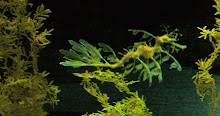
One of the great perks of life as a scientist is the travel opportunities (it is hardly a coincidence that so much is known about Hawaiian fruit flies and so little about Siberian ones...if, indeed, Siberia has fruit flies)....
Facetiousness aside, I have been very lucky in that my scientific career has allowed me to either visit or work in nineteen countries over the past decade, spread across four continents. Some of that was because I began by studying jellyfish, which are not only pelagic, but extraordinarily difficult to keep in captivity (only about a dozen species have ever been kept in captivity for a prolonged period- perhaps more now, but not many more). There is something really useful about seeing living organisms in their natural habitats, and seeing as many habitats as possible that, even yet, no amount of reading or watching videos can replace. It is not coincidental that many of the biggest biological or, at least, zoological and botanical, theories have been devised after extensive travel- Darwin’s trips on The Beagle are the obvious examples, but I am also thinking of the work of Walter Henry Bates in the Amazon. Then, of course, there were the voyages of Alfred Russell Wallace leading to his independent discovery of evolution and to his finding “The Wallace Line*”. Probably every biogeographer or wandering zoologist since Wallace has dreamed of finding their own “line”.
As a scientist, travel was absolutely essential to my work for many years- allowing me to collect samples, conduct measurements and take research photographs in the wild. I also benefitted enormously from having seen specific behaviours occurring in the natural world.
On a human level, I was- and still am- always amazed that different places have such strong and unique atmospheres, especially cities. For ages, I have wanted to capture on film the mood of several markedly different places and to share something of these experiences. However, as this is an artistic, rather than a scientific project, so it has long been on the back- burner. Finally, over the past year, I have been able to work on it in earnest. The result is my first fine art (photography) book: “Rock in the Landscape”, which was released today.
The book is a series of landscape (and a few macro) photographs, showcasing rock in various environments- from volcanoes in Korea and Sicily, to the Italian Alps near Turin, Hungarian Hills, English Meadows, the Ramparts of Jerusalem and the crumbling walls of Armageddon. You can see the book in more detailand/or buy online [HERE].


Image (c) Victoria Neblik, 2010. Extracted from "Rock in the Landscape" [LINK HERE]
If you click on the picture below, you can flick through 43 (of the 88) pages in the book-
(*The Wallace Line divides Borneo from “Celebes” (aka Sulawesi) and Bali from its eastern neighbour, Lombok; the wildlife one side of the line is dramatically different from that on the other- Wikipedia has a longer explanation of The Wallace Line)

















